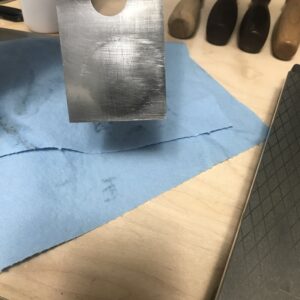I just got a 2” Hock O1 plane iron to replace a cheaper old iron and I tried flattening the back and I can’t figure out why I can’t get past this circle in the middle on the back of it. I use diamond stones and have even tried my extra coarse stone and it won’t seem to develop an even scratch pattern. It just won’t even out and I’m at a loss as to why it’s like this. When I flattened the back of my chisels it took no time at all and I’ve been working on this plane iron for about an hour now and I just can’t get it right. Has anyone run into this before or have any suggestions for me? I’m very new to woodworking and this is my first post so any help would be greatly appreciated. Thanks!
Discussion Forum
Get It All!
UNLIMITED Membership is like taking a master class in woodworking for less than $10 a month.
Start Your Free TrialCategories
Discussion Forum
Digital Plans Library
Member exclusive! – Plans for everyone – from beginners to experts – right at your fingertips.
Highlights
-
Shape Your Skills
when you sign up for our emails
This site is protected by reCAPTCHA and the Google Privacy Policy and Terms of Service apply. -
 Shop Talk Live Podcast
Shop Talk Live Podcast -
 Our favorite articles and videos
Our favorite articles and videos -
E-Learning Courses from Fine Woodworking
-
-
 Fine Woodworking New England Event
Fine Woodworking New England Event -













Replies
Chris, I only have one Hock iron (I got it to use in a Stanley Bedrock) and it came dead flat when new.....I believe they are supposed to all come dead flat. You shouldn't have to flatten it at all, not even a tiny bit, let alone have circles in the back. Maybe you polish it a little, but I am thinking any flattening you try to do to a brand new Hock iron you might actually be doing more harm than good. Is this a brand new iron or from ebay or somewhere? if new, I think I would contact him/them for a replacement.
It’s brand new. Sorry, I actually tried just polishing it first on my finest stone and that’s when the circle developed then dropped to coarser stones. I tend to call polishing flattening as well
You, really, really don't have to do all that flattening. None of that steel is cutting wood. All you are accomplishing is getting extra exercise.
Only the very edge, on both sides of the bevel, need to be flat and polished. The easiest way to get there is generally referred to as "the ruler trick." It will save you a lot of work and aggravation.
Call or email Ron Hock -- he will take care of you...
Send that photo to Ron and get your answer from the source, he's very nice to deal with.
I see stone marks both inside and outside the circle. If you have a flat stone and it's abrading inside the circle you have a belly. Send it back.
If the stone is contacting outside the circle you have a hollow. Enjoy the reduced work of future back polishing and keep it.
Like a Japanese blade, the hollow allows a small flat behind the edge and it will grow with more sharpening.
Like John C2 said....only worry about flattening that 1/8” to 3/16” adjacent to the cutting edge.
A sharp edge occurs when two *flat* planes meet. The back side of the blade doesn’t make a difference once past the cutting edge.
Polish that narrow strip sliding the blade back and forth along the length of the stone, but just that strip of the blade.
Once the back edge is polished you are good.
Each time you hone do it again once or twice on the highest grit to remove the burr. That isn’t considered polishing, just sharpening.
Mike
"A sharp edge occurs when two *flat* planes meet."
Don't tell my gouges.
This is a calculus thing. Each point on the gouge is flat where the 2 surfaces meet.
A plane is flat in any orientation.
Ron will help you. He is the expert. I’ve bought from him for years and he has always been very accessible and helpful.
It's bellied. They ground the bevel on the wrong side of the blade. Send it back. It's not a problem the purchaser should have to solve.
This forum post is now archived. Commenting has been disabled